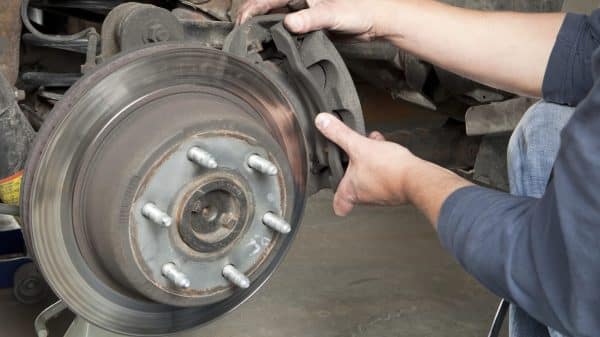
The Short Answer:
Trucking regulations are federal safety rules that control how long truck drivers can work, how often trucks must be inspected, and what training and licenses drivers need. These laws are meant to protect everyone on the road by preventing accidents caused by things like driver fatigue, poor vehicle maintenance, or unqualified drivers.
If a truck driver or their company breaks these rules and causes a crash, they may be held legally responsible. That means you could be entitled to compensation for your medical bills, lost income, and other damages. A truck accident lawyer can investigate whether any violations occurred and help you hold the trucking company accountable.
Key Takeaways:
- FMCSA and DOT regulations are in place to help prevent truck accidents and keep roads safer.
- Rules limiting drive time aim to reduce crashes caused by tired or overworked drivers.
- Poorly maintained trucks and unqualified drivers are often tied to serious accidents.
- If these safety rules were broken, it may help prove fault in your injury claim.
- The McMahan Law Firm helps truck accident victims seek full compensation. You won’t pay anything upfront, and your consultation is 100% free. You only pay if we win your case.
Who Regulates the Trucking Industry?
The 2 main agencies responsible for trucking regulations are the Federal Motor Carrier Safety Administration (FMCSA) and the U.S. Department of Transportation (DOT). Together, they create and enforce rules that cover everything from driver work hours to vehicle safety inspections.
These federal regulations apply nationwide, including in Tennessee, and affect nearly every commercial truck on the road. Whether a truck is crossing state lines or operating locally, companies are expected to follow these safety standards.
The purpose of these rules is simple: to prevent crashes and save lives. They aren’t just meant to keep truck drivers safe. They protect everyone else on the road, including families in cars, motorcyclists, and pedestrians.
When companies ignore these rules, it’s not just a paperwork issue. It’s regular drivers who suffer the consequences.
How Hours of Service Violations Can Lead to Accidents
The FMCSA’s Hours of Service (HOS) rules exist to prevent truck drivers from staying behind the wheel too long. These rules limit how many hours a driver can work before taking a break. When trucking companies push drivers to ignore these limits, the risk of a serious or even deadly crash increases.
Fatigued driving is one of the most dangerous forms of impairment. A tired trucker may have slowed reaction time, poor judgment, or even fall asleep while driving, all of which put everyone else on the road in danger.
Some of the most common HOS violations include:
- Driving beyond the 14-hour on-duty limit
- Skipping required rest breaks
- Failing to log hours correctly (or tampering with ELDs)
If the truck driver who hit you was over their allowed driving time, that violation could help prove they were at fault and that you could deserve compensation.
Wondering if your case involves an HOS violation? Contact a truck accident lawyer in Tennessee for a free case review.
Drivers can only be “on duty” for 14 consecutive hours after starting their day. This includes driving time and any other work-related tasks, like loading cargo. Once the 14-hour window is up, the driver must stop driving, even if they haven’t driven the full 11-hour limit.
Breaking this rule can lead to dangerous levels of fatigue, especially at the end of a long shift. If your crash happened late in a driver’s shift, their hours should be closely reviewed.
Within that 14-hour window, truckers are allowed to drive for a maximum of 11 total hours. Once they hit 11 hours of drive time, they must stop and take a full rest period.
Drivers must also take a 30-minute break after 8 hours of continuous driving. This break helps prevent exhaustion and gives drivers time to reset before continuing on.
If a driver skips these breaks or exceeds their driving hours, they’re not just breaking the law — they’re putting lives at risk.
Drivers are normally required to take at least 10 consecutive hours off-duty between shifts. However, the FMCSA allows drivers to split this rest time under a rule called the 8/2 split.
Under this rule:
- 1 rest period must be at least 8 hours in the truck’s sleeper berth
- The second must be at least 2 hours off-duty (or in the berth)
Used correctly, this rule provides flexibility. But used incorrectly, it can mask hours-of-service violations that lead to drowsy driving. If a driver misused the 8/2 split before your crash, it may have contributed to what happened.
In addition to daily limits, truckers also face weekly driving caps:
- No more than 60 hours in 7 days, or
- No more than 70 hours in 8 days
Once they hit that limit, drivers must take a 34-hour break before restarting another driving cycle.
These rules exist to prevent long-term exhaustion, but they’re often ignored when companies push tight delivery schedules. If the driver in your crash had gone over their weekly limits, that’s a serious violation, and one that could impact your case.
Key Trucking Regulations That Affect Injury Claims
When a truck accident happens, the first question is usually whether or not the trucking company followed the law. Federal trucking regulations cover every part of commercial operations, from who’s allowed to drive to how loads are secured. If any of these rules were broken, it could become powerful evidence in your injury claim.
Maintenance & Inspection Requirements
Trucking companies are required to keep their vehicles in a safe working condition. That includes:
- Daily pre-trip and post-trip inspections
- Routine brake checks
- Scheduled repairs with records kept on file
Neglecting basic maintenance can lead to serious mechanical failures on the road, like brake failure, tire blowouts, or steering problems.
If a truck’s brakes failed during your crash, we’ll look into whether the company skipped required maintenance.
Driver Licensing & Qualification Rules
Drivers of commercial trucks must carry a valid Commercial Driver’s License (CDL) and meet strict qualifications. This includes:
- Passing medical exams
- Clearing background checks and drug testing
- Maintaining a clean driving record
Companies are also required to verify these qualifications regularly. Letting an untrained or medically unfit driver behind the wheel puts everyone at risk.
Hiring unqualified drivers is a safety violation, and it could make the trucking company liable for your injuries.
Weight Limits & Cargo Securement
There are strict rules about how much weight a truck can legally carry. Most trucks are limited to 80,000 pounds total, and anything beyond that requires a special permit.
Cargo must also be properly tied down and evenly distributed. Loose or unbalanced loads can cause:
- Rollover accidents
- Lost cargo on the highway
- Loss of vehicle control
If overloaded or improperly secured cargo caused your accident, it may point to clear negligence.
Electronic Logging Devices (ELDs)
Electronic Logging Devices (ELDs) are installed in most commercial trucks to record:
- Driving hours
- Vehicle movement
- Rest periods
These logs are meant to ensure drivers follow HOS regulations and can’t falsify their records.
If driver fatigue played a role in your crash, ELD data could reveal violations that support your injury claim.
How Regulation Violations Can Prove Fault in Your Case
When a trucking company breaks safety laws, it’s more than just a rule violation. It may be considered negligence per se, a legal concept that helps prove fault in a personal injury claim. That means if a trucker or their employer violated a regulation and caused a crash, that violation can be used as strong evidence against them.
Some of the most common violations that support injury claims include:
- Falsified or missing electronic logbook data
- Skipped maintenance or inspection records
- Overweight loads or unsecured cargo
- Drivers without proper training or medical clearance
In many truck accident cases, the driver isn’t the only responsible party. Violations often point back to the company, especially if they ignored safety procedures, failed to enforce rest breaks, or pressured drivers to meet unsafe deadlines.
We use this kind of evidence to help build strong cases for truck accident victims and hold negligent companies accountable.
What to Do if You Suspect a Trucking Violation
If you were involved in a truck accident and suspect the driver or company broke the rules, take the following steps:
- Don’t confront the company or their insurance. They may try to get you to say something that weakens your case. Let your lawyer handle all communication.
- Document everything. If possible, take photos of the truck, the scene, and the driver’s behavior. Make a note of anything unusual, like if the driver appeared drowsy or rushed.
- Call a lawyer immediately. Evidence like logbooks and inspection reports can disappear quickly. The sooner you reach out, the better your chance of preserving key proof.
Think the trucker broke the law? Let us investigate and fight for the compensation you may be owed.
How The McMahan Law Firm Can Help You
We’ve helped many truck accident victims recover compensation after crashes involving DOT and FMCSA violations. Our team knows how to spot the red flags, and we know what steps to take to hold trucking companies accountable.
Here’s what we do for our clients:
- Investigate driver and company violations
- Request and analyze logbooks, inspection records, and black box data
- Build strong cases using regulation violations as supporting evidence
- Fight for full compensation for medical bills, lost income, and pain and suffering
You won’t pay anything upfront, and you don’t owe us a thing unless we win your case. Schedule your free case consultation with a truck accident lawyer today.




